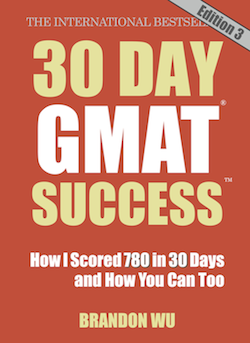The Official Guide 13th Edition How To Quantitative: Page 281, #72
Every so often, the Official Guide explains a question in terms of strategy, rather than just pure math, but these helpful moments are few and inconsistently applied. In this question, the reason that statement (1) is not sufficient is demonstrated through a strategy of assigning values, but, oddly enough, the reason that statement (2) is sufficient is not. Remember that Data Sufficiency questions are divided into two categories: Concrete Value and Yes/No. Assigning values is often a great approach for Yes/No questions because it can give you more certainty that you have the correct answer than can abstract reasoning.
In this question, the Official Guide states that if you try a value of 3 in statement (1), you fulfill the criterion that m⁄2 is not an even integer because this choice results in a fraction, and you get an answer of “yes” to the question. If you try 10, you also fulfill the criterion since the result is an odd integer, and you get an answer of “no” to the question. Therefore statement (1) is insufficient.
However, the Official Guide then explains statement (2) in terms of mathematical reasoning. Why not continue assigning values? A good idea is to reuse the values you used in statement (1), if possible. That way, if you need to test choice (C), you already know some values that work for both statements. Unfortunately, in this case, that is not possible. The value 3 works, since 0 is an even integer, but 10 will not fulfill the stated criteria that m – 3 must be even and an integer.
You already know that 3 gives you an answer of “yes” to the question, but how do you prove that statement (2) always gives an answer of “yes?” You can spend a long time trying a dozen other numbers, but that is hardly efficient. You need to determine what concepts the question is testing, so that you will only have to assign a few more values and can have confidence that the values you assign will be those that matter. The key terms in this question are odd, even, and integer. Those are the qualities you want to consider when assigning a new value. Trying negative values or very large values will not make a difference.
You learned from the value 10 that you cannot use an even integer in statement (2), so you only need to try a fraction. But no fraction you assign to m in statement (2) will fit the criteria of the statement, so a fraction is also not possible. Therefore, an odd integer is the only value possible in statement (2), making the statement is sufficient.
Want more information? Check out the Data Sufficiency section of my 30 Day GMAT Success book!
